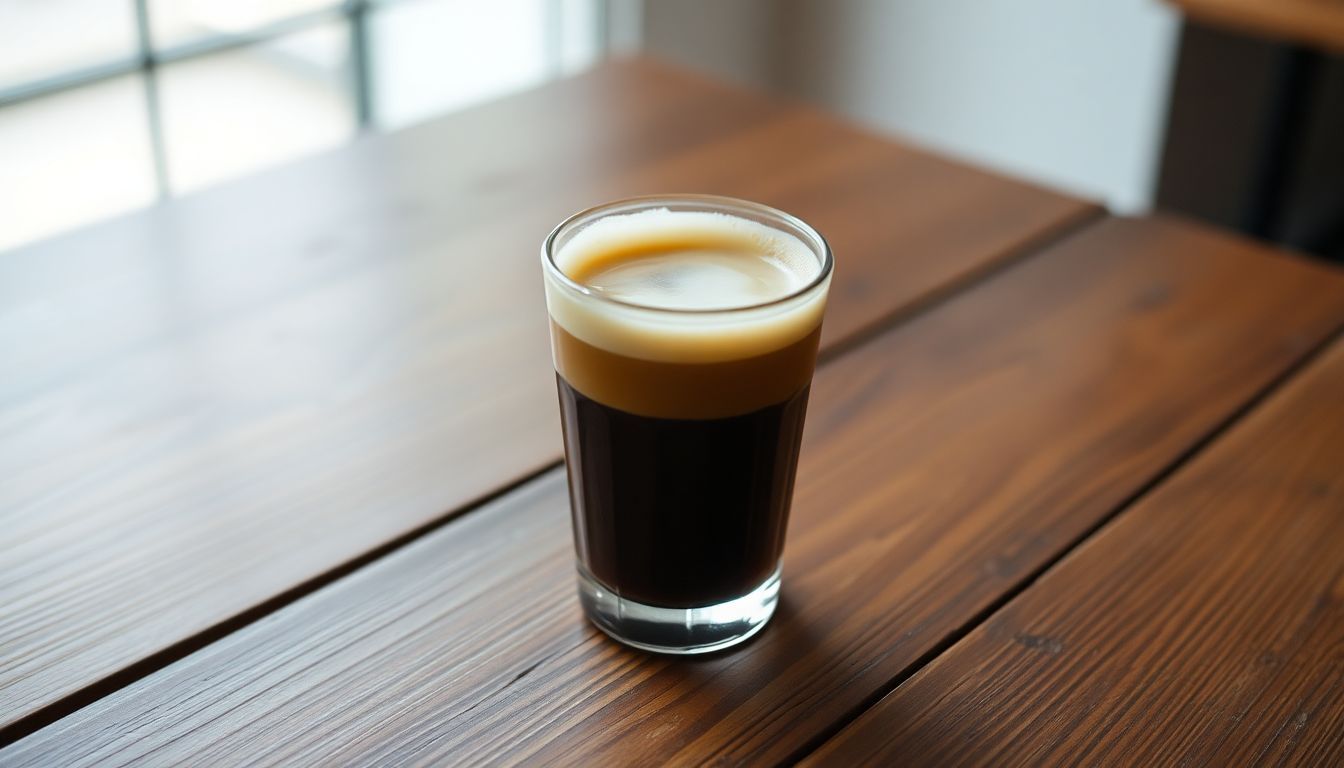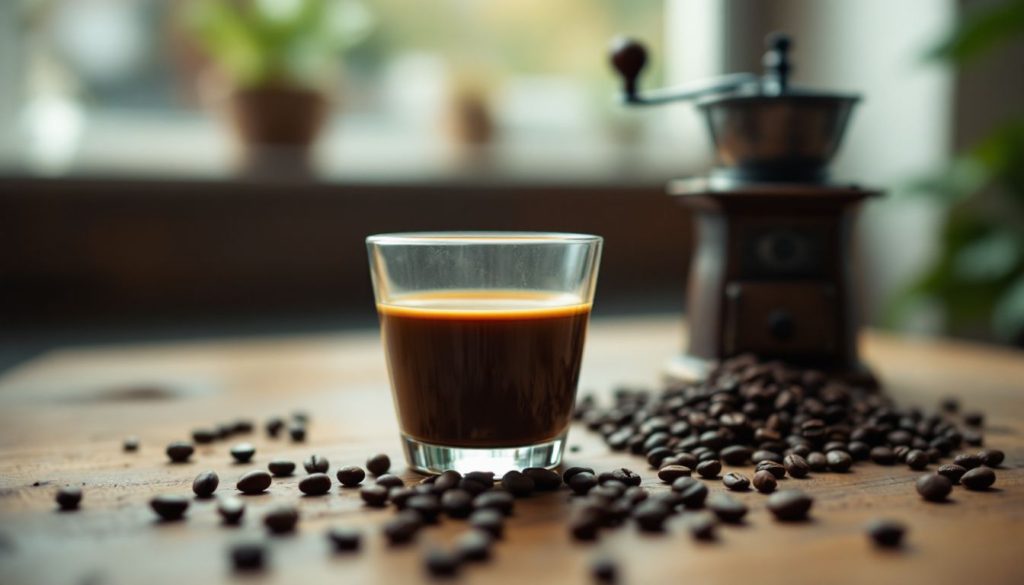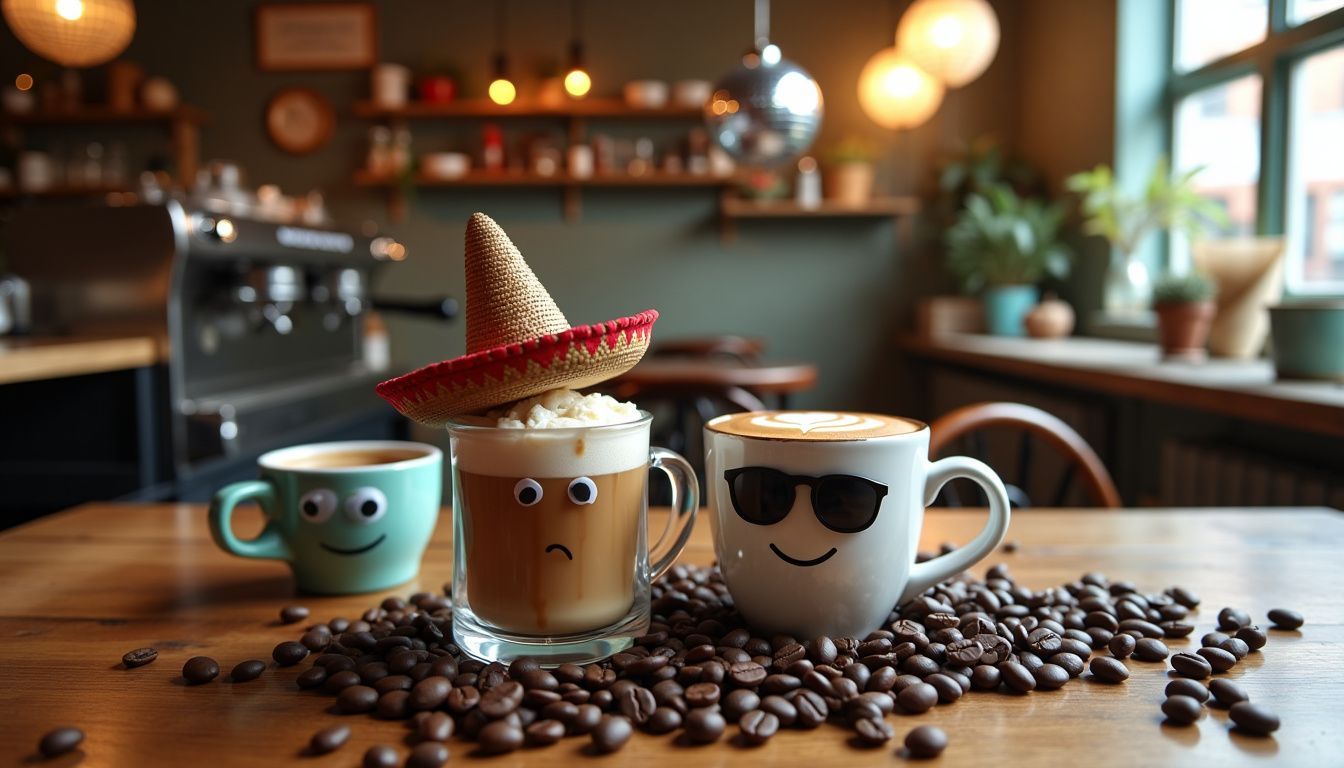Blog
What Is a Piccolo Coffee?
Ever wondered what a piccolo coffee is? Many coffee lovers get confused by this small but mighty drink. It’s not as well-known as a latte or cappuccino, but it packs a punch.
Here’s a fun fact: A piccolo coffee is smaller than a flat white or macchiato. It’s usually served in a 3-4 oz glass. This tiny treat gives you a strong coffee taste without filling you up.
Want to know more about this little gem? Keep reading to become a piccolo pro.

What Is A Piccolo Coffee?
A piccolo coffee packs a punch in a small glass. It blends a shot of espresso with a dash of steamed milk, giving you a strong yet smooth drink.
Origin And History
Piccolo coffee emerged in Sydney, Australia in the early 2000s. Baristas developed this small drink to allow customers to sample new coffee blends without becoming full. It rapidly gained popularity across Australian cafes before reaching the UK.
The name “piccolo” is Italian for “small” – appropriate for this diminutive beverage.
Saša Šestić, 2015 World Barista Champion, describes piccolo as “one part espresso, two parts steamed milk”. This proportion provides a strong coffee flavour balanced with creamy milk.
UK coffee expert Ceiran Trigg refers to it as a “balanced espresso/milk drink”. Piccolo aligns with the third-wave coffee movement, emphasising quality and artisanal methods.
Basic Components
A piccolo coffee has two main parts: espresso and milk. You’ll find one shot of espresso or ristretto at its base. This strong coffee gives the drink its punch. On top, there’s a small amount of steamed milk.
The milk adds a creamy touch without drowning out the coffee taste.
The size matters too. A piccolo comes in a tiny 90ml glass called a demitasse. You’ll get about 2-3 ounces (60-90ml) of steamed milk in your drink. Good beans make a big difference.
Try Colombian Bucaramanga for nutty, chocolatey notes in your piccolo.
Size And Measurements
Piccolo coffee comes in a small size. It’s usually served in a 3-4 oz (85-114 ml) glass. This makes it much smaller than other coffee drinks. A latte or cappuccino is often 240ml, while a flat white is 160ml.
The piccolo’s compact size lets you enjoy a strong coffee taste without too much milk.
The piccolo’s small size offers benefits. You get a rich espresso flavour without filling up on milk. It’s perfect for those who want a quick coffee hit. The size also helps control portions and caffeine intake.
You can savour the taste of quality coffee in just a few sips.
How Does A Piccolo Coffee Differ From Other Coffee Drinks?
Piccolo coffee stands out from its cousins. It packs a punch in a tiny glass, unlike its larger relatives.
Comparison With Latte
Lattes and piccolo coffees differ in size, milk content, and flavour intensity. Here’s a quick comparison:
| Feature | Latte | Piccolo |
|---|---|---|
| Size | 230ml | 100ml |
| Milk-to-coffee ratio | 3:1 | 3:1 |
| Flavour | Milder | Stronger |
| Texture | Creamier | Less creamy |
| Caffeine content | Higher | Lower |
You’ll notice lattes have a softer taste due to more milk. They’re suitable for those who enjoy a larger, less intense coffee. Piccolo coffees offer a stronger flavour in a smaller cup. Their size makes them suitable for a quick caffeine boost. You can select based on your taste and caffeine preferences.
Comparison With Cortado
Cortados pack a stronger espresso punch than piccolo lattes. Here’s a quick comparison:
| Feature | Piccolo Latte | Cortado |
|---|---|---|
| Espresso shots | One | Two |
| Glass size | 3-4 oz | 4-5 oz |
| Caffeine content | 63-75 mg | 126-150 mg |
| Milk-to-coffee ratio | 1:3 | 1:2 |
| Taste profile | Milder, creamier | Stronger coffee flavour |
Cortados offer a bolder coffee hit. They use more espresso and less milk. This creates a stronger taste. Piccolo lattes are smoother and milkier. You’ll notice a big difference in caffeine levels too. Cortados give you twice the buzz of a piccolo latte.
Comparison With Macchiato
Piccolo and macchiato have similarities, but distinct characteristics set them apart. Here’s a quick comparison:
| Feature | Piccolo | Macchiato |
|---|---|---|
| Size | 3-4 oz | 2-3 oz |
| Espresso | Ristretto shot | Standard espresso shot |
| Milk | Steamed, microfoam | Aerated, frothier |
| Milk Amount | 2-3 oz | Few teaspoons |
| Strength | Stronger, richer | Less intense |
| Texture | Smooth, velvety | Frothier |
Piccolo uses a ristretto shot, resulting in a stronger taste. The macchiato contains less milk, producing a frothier drink. Piccolo provides a smoother texture because of its steamed milk technique.
How Is A Piccolo Coffee Made?
Piccolo coffee needs care to make. You pick good beans, pull a shot, steam milk just right, and mix it all. Want to know more? Keep reading!
Coffee Bean Selection
Choose top quality beans for your piccolo. Colombian Bucaramanga gives nutty, chocolate notes. Di Stefano’s Ethiopian Coffee Beans work well too. For a perfect piccolo latte, pick Single Origin Coffee or Arabica/Robusta blends.
Fresh beans make a big difference in taste.
Your bean choice affects the piccolo’s flavour. Light roasts bring out fruity notes, while dark roasts offer bold, rich tastes. Grind the beans just before brewing to keep their oils and aromas.
This step is key for a great piccolo experience.
Espresso Extraction
Espresso extraction is central to a piccolo coffee. You’ll need 15g of finely ground coffee to brew a ristretto shot. This shot goes into a small demitasse glass. The goal is to extract 20-30 ml of espresso.
This process creates a strong, concentrated base for your piccolo.
The quality of your espresso is very important. Use fresh, well-roasted beans for the best flavour. Grind them just before brewing. Adjust your machine to the appropriate pressure and temperature.
Pull the shot for about 15-20 seconds. You’ll get a rich, golden crema on top. This indicates you’ve prepared it correctly.
Milk Steaming Technique
Steam your milk to 60°C for a piccolo coffee. Use about 100ml of milk in a small jug. Tilt the jug slightly and place the steam wand just below the surface. This creates a vortex for smooth microfoam.
Keep the wand tip near the jug’s side to spin the milk.
After steaming, tap the jug on the counter to pop large bubbles. Swirl the milk to mix the foam and liquid. This gives your piccolo a silky texture. Pour the milk slowly into your espresso shot.
Aim for a 1:2 ratio of espresso to milk for the perfect piccolo balance.
Assembly Method
Pour the espresso shot into a small 3-4 oz glass. Gently add 2-3 oz of steamed milk on top. The milk should blend smoothly with the espresso, creating a layered look. Aim for a 1:2 ratio of espresso to milk.
This approach provides a strong coffee taste with a creamy finish.
Serve your piccolo right away in the same glass. The small size allows you to enjoy it while it’s hot. You’ll taste the rich espresso first, followed by the silky milk. This drink offers an excellent balance between strong coffee and smooth texture.
Where Can You Find Piccolo Coffee?
Piccolo coffee has gained fans worldwide. You can find it in many cafes across Australia, New Zealand, and parts of Europe.
Popularity In Different Countries
Piccolo coffee has gained a strong following in Australia. It’s a staple in trendy cafes across Melbourne and Sydney. The drink has also caught on in the UK, especially in London’s specialty coffee shops.
You’ll find it on menus in hip areas like Shoreditch and Soho.
Spain and Portugal prefer cortados to piccolos. These countries have a long history with espresso-based drinks. In Italy, the birthplace of espresso, piccolos are less common. Italians stick to traditional options like cappuccinos and macchiatos.
The US is slowly warming up to piccolos, with some high-end coffee shops adding them to their menus.
Cafe Availability
Piccolo lattes are rare on most coffee shop menus. You’ll find them mainly in specialty cafes that focus on unique brews. These small shops often cater to coffee lovers who want to try new drinks.
They’re more likely to offer piccolo lattes alongside their standard options.
Big coffee chains don’t usually serve piccolo lattes. If you want one, look for local, independent coffee houses. These spots tend to have skilled baristas who can craft this special drink.
Ask if they make piccolo lattes – even if it’s not on the menu, they might whip one up for you.
Regional Variations
Piccolo lattes vary across regions. In Australia, they’re a common sight on café menus. But in the UK and Denmark, you’ll rarely find them listed. Many coffee lovers in these areas often mix up piccolo lattes with other drinks.
This confusion stems from the drink’s limited availability outside its home turf.
Different countries put their own spin on the piccolo. Some use different milk types or adjust the espresso-to-milk ratio. In Spain, you might find a similar drink called a “cortado”.
Italy offers the “macchiato”, which shares some traits with the piccolo. These local twists keep the piccolo scene diverse and exciting for coffee fans.
What Are The Benefits Of Drinking Piccolo Coffee?
Piccolo coffee offers a perfect balance of flavour and size. It packs a punch without overwhelming your taste buds. Want to know more about its perks? Read on!
Portion Control
Piccolo coffee offers great portion control. You get a small 3-4 oz glass with less milk than a standard latte. This makes it perfect if you want to watch your calories but still enjoy a tasty coffee.
The milk-to-coffee ratio is just 1:3, giving you a strong coffee flavour without too much milk.
This tiny drink packs a punch. You can savour the rich espresso taste without filling up on milk. It’s ideal for those who love coffee but don’t want a big serving. The small size lets you enjoy your caffeine fix without overdoing it.
Caffeine Content
Piccolo lattes contain 63-75 mg of caffeine. This small drink provides a mild energy increase without excessive nervousness. It’s ideal for those seeking a quick pick-me-up without needing a full-size latte.
You’ll experience a strong coffee flavour in a small cup.
Cortados provide more energy with 126-150 mg of caffeine. They’re stronger than piccolos but still smaller than regular coffees. You can savour the rich espresso flavour without consuming too much milk.
These drinks are suitable for coffee enthusiasts who desire more caffeine in a compact form.
Taste Experience
Piccolo lattes pack a punch of flavour in a small cup. You’ll taste bold espresso with a hint of creamy milk. The ristretto base gives a rich, intense coffee hit. The 1:3 milk-to-coffee ratio keeps the drink strong yet smooth.
This tiny treat offers a unique coffee experience. You get the full taste of espresso without too much milk. It’s perfect for those who want a strong coffee flavour but find plain espresso too harsh.
The velvety texture adds a nice touch to each sip.
Conclusion
Piccolo coffee presents a distinctive taste in a compact form. You’ll savour its intense espresso flavour blended with creamy milk. It’s ideal for those seeking a swift coffee experience.
Prepare one at home using freshly ground beans and steamed milk. You can find piccolo lattes in numerous cafes throughout the UK. Remember to use code “PICCOLO20” for 20% off specialty beans when you purchase.
FAQs
1. What’s a piccolo coffee?
A piccolo is a small, strong coffee drink. It’s made with a shot of espresso and a bit of steamed milk. Think of it as a tiny latte or cortado.
2. How do you make a piccolo latte?
To make a piccolo, use a single shot of espresso. Steam a small amount of milk. Pour the milk over the espresso in a small glass. It’s like making a latte, but smaller.
3. What’s the difference between a piccolo and a macchiato?
A piccolo has more milk than a macchiato. A macchiato just has a spot of milk. A piccolo is more like a mini latte. Both use espresso as the base.
4. Where did the piccolo come from?
The piccolo started in Australia. It’s now popular in many coffee shops around the world. The word “piccolo” means “small” in Italian.
5. What kind of coffee is best for a piccolo?
Use a strong, dark roast coffee for a piccolo. The rich flavor stands up well to the milk. Some shops use a ristretto shot for extra punch.
6. How is a piccolo served?
A piccolo is served in a small glass, about 3-4 ounces. It’s smaller than a regular latte glass. The drink should have a thin layer of foam on top.



